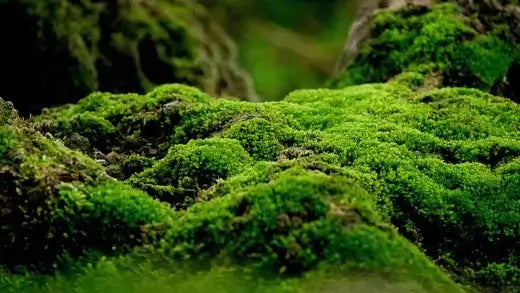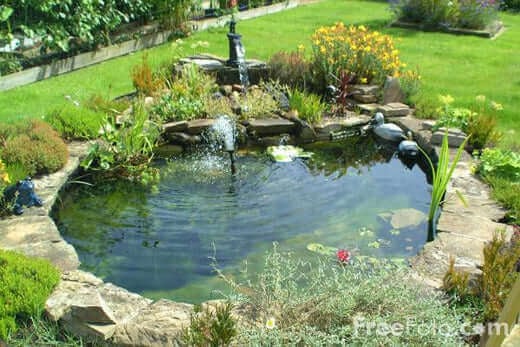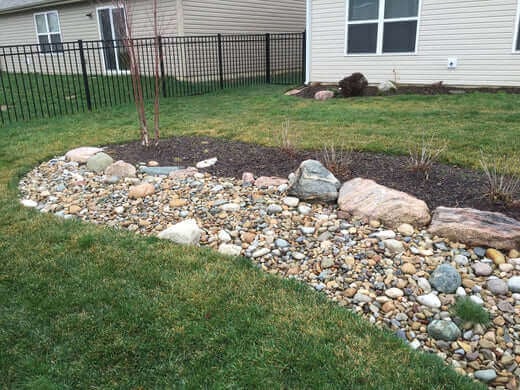10 Great Landscaping Rocks to Enhance Your Garden
Landscaping rocks are essential in creating a visually appealing and functional garden. They provide texture, contrast, and focal points that enhance the overall aesthetics of outdoor spaces. From adding depth to preventing erosion, landscaping rocks serve multiple purposes. This article will explore ten great landscaping rocks that can transform your garden into a captivating and harmonious haven.
River Pebbles: River pebbles are smooth, round stones in various sizes and colors. These rocks are perfect for creating pathways or borders within your garden. They offer a natural and tranquil appearance, mimicking the beauty of riverbeds. River pebbles work well in water features and can cover large areas while allowing water to permeate the soil.
Flagstone: Flagstone is a flat, sedimentary rock famous for its versatility. It can create stepping-stone pathways, patios, and even stacked walls. The irregular shapes and earthy tones of flagstone lend a rustic charm to gardens. Their non-slip surface makes them ideal for high-traffic areas.
Boulders: Boulders are the giants of the rock world, adding drama and focal points to any garden. They are available in various sizes and colors, and when strategically placed, they can create a sense of grandeur and balance. Boulders work well as centerpieces or as anchors for rock gardens, adding a touch of rugged beauty.
Lava Rock: Lava rocks, originating from volcanic eruptions, offer a unique and striking appearance. Their porous nature makes them excellent for retaining moisture in the soil and promoting plant growth. They come in deep red and black shades, contrasting beautifully with green foliage. Lava rocks can be used as mulch or ground cover.
Crushed Granite: Crushed granite is a durable, low-maintenance option for pathways and driveways. Its fine texture compacts well, providing a stable surface for walking and driving.
Quartzite: Quartzite rocks are known for their elegance and sparkling appearance. They are often used to create stunning garden accents and decorative features. Their reflective surfaces catch and play with sunlight, adding a touch of glamour to the landscape.
Slate: Slate rocks offer a sleek and modern aesthetic to gardens. They are commonly used for creating contemporary-style pathways and patios. Their flat, layered texture creates a visually appealing surface that works well with minimalist designs. Slate is available in various colors, including deep blues, earthy greens, and rich purples.
Fieldstone: Fieldstones are naturally occurring rocks found in fields or along streams. They have a charming, weathered appearance that is perfect for creating timeless and inviting landscapes. Fieldstones can build walls, borders, or simple seating arrangements.
Marble Chips: Marble chips bring a touch of luxury to gardens with their smooth, polished appearance. They come in various colors, including white, gray, and beige. These rocks are often used to highlight specific areas, like around statues or ornamental plants, and they can also serve as a backdrop to make other colors pop.
Sandstone: Sandstone rocks feature warm and earthy tones that evoke a sense of natural beauty. They are ideal for creating retaining walls, stairs, and unique garden features. Sandstone's versatility and ability to blend seamlessly with the environment make it a popular choice for traditional and contemporary gardens.
Incorporating landscaping rocks into your garden design can enhance appeal and functionality
Whether you're aiming for a serene and Zen-like atmosphere or a vibrant and dynamic space, the variety of rocks available ensures you'll find the perfect fit. In garden design, one often thinks of vibrant flowers, lush greenery, and winding pathways.
However, an often underestimated element that plays a pivotal role in creating a truly functional and aesthetically pleasing garden is rocks. These humble, age-old components are the unsung heroes that provide structure, texture, and a sense of harmony to outdoor spaces. From their role in drainage and erosion control to their capacity to enhance visual appeal, rocks are essential in transforming an ordinary garden into an extraordinary one.
One of the primary functions of rocks in a garden is their ability to assist in drainage and erosion control. Improper drainage can lead to waterlogging, root rot, and declining plant health. Intelligently placed large and small rocks can act as natural barriers, redirecting excess water away from delicate plants and preventing soil erosion during heavy rainfall. By creating raised rock beds or installing gravel-filled trenches, gardeners can ensure that their plants receive the appropriate amount of moisture without the risk of drowning roots or soil displacement.
Rocks contribute to the establishment of microclimates within a garden.
This process creates warmer pockets in the park, which can be advantageous for cultivating heat-loving plants or extending the growing season. Conversely, rocks can provide shade and cooling effects in areas where direct sunlight might scorch delicate flora. By thoughtfully positioning rocks, gardeners can manipulate temperature variations to suit the needs of various plants.
Another critical aspect of incorporating rocks into garden design is their aesthetic appeal. The juxtaposition of different rock sizes, shapes, and colors can introduce a captivating visual contrast that complements the surrounding vegetation. Whether used as focal points, border edging, or pathways, rocks add texture and dimension that soften the landscape.
Boulders can serve as artistic focal points, commanding attention and inviting contemplation, while smaller pebbles or crushed stones can create intricate mosaics or visually pleasing ground covers. Furthermore, rocks offer a low-maintenance option for garden design.
Unlike certain plant species that require constant care and attention, stones are durable and do not require regular watering, pruning, or pest control. This makes them ideal for busy gardeners or those looking to create a low-effort yet stunning outdoor space. Incorporating rocks also reduces the need for extensive mulching, providing a natural barrier against weed growth and soil erosion. In Japanese gardening traditions, rocks hold a deep philosophical significance. They represent elements of the natural world in a distilled form, symbolizing mountains, islands, or even animals.
These arrangements, known as "karesansui" or dry landscape gardens, illustrate the power of rocks to evoke emotion and contemplation without excessive plantings. This design philosophy underscores the importance of stones as fundamental elements in creating a serene and meditative garden atmosphere. In conclusion, rocks are indispensable components when it comes to crafting a functional and aesthetically pleasing garden.
Rocks' role in drainage, erosion control, microclimate regulation, and visual enhancement cannot be overstated. By understanding and harnessing their potential, gardeners can create beautiful, sustainable, and easy-to-maintain landscapes. So, the next time you embark on a garden design project, remember that rocks are not just lifeless entities but essential building blocks that contribute to the very essence of a garden's vitality.
A Guide to Finding and Selecting the Perfect Landscaping Stones
1. Determine the Purpose and Design
Establish your intended use before your rock search begins.
Functional Uses
Rocks offer slope stabilization solutions and can form retaining walls while guiding drainage paths away from buildings. Heavier stones help prevent soil erosion on slopes, while stones like gravel or river rock create functional walkways and borders. Choose between a primary focus on practical functions such as erosion control versus a combination of visual appeal and functionality.
Aesthetic Uses
Visual design remains crucial when designing decorative rock gardens or water features. You can create a natural riverside or mountain scene using stones of different shapes and sizes. Landscaping stones can highlight important features such as statues or water fountains by contrasting hard rocks and soft plant textures.
Design Consistency
Your home and garden require a consistent overall design style. Modern minimalist gardens prefer smooth polished stones and uniform gravel, while rustic cottage gardens use varied irregular rocks to achieve an organic aesthetic. A landscape design achieves unity by maintaining consistent shapes, textures, and colors.
2. Learn About Different Rock Types
After establishing your landscaping purpose, you need to study different types of rocks used in landscaping.
River Rock
River rocks present smooth shapes and various earthy colors, including brown shades and gray and tan tones. Their naturally smooth surfaces produce an ideal soft finish for garden pathways, water features, and plant mulch. River rocks are commonly sized between half an inch and two inches in diameter.
Gravel and Crushed Stone
Gravel and crushed stone are budget-friendly options that vary in size and color. Patios and walkways require a base layer of crushed limestone or granite, but pea gravel is a smaller alternative for garden pathways. Crushed stones compact closely together, which makes them practical for drainage while also serving as an underlayment material beneath bricks and pavers.
Flagstone
Flagstone's natural flat yet irregular shape provides a stable patio base for walkways and stepping stones. It comes in multiple colors, including sandstone and limestone, making its layered appearance highly desirable. Stone thickness influences expense and longevity, so selecting stone dimensions that withstand foot traffic for walkways or patios is crucial.
Boulders
Large boulders provide bold landscape accents as focal points or functional elements like retaining walls and seating areas. They present themselves in multiple forms, including round and angular shapes, and their color spectrum is broad. These stones cost more and require effort to transport but provide a dramatic sculptural presence to landscapes.
Fieldstone
Fieldstone typically originates from fields and natural rock formations and has a rough texture. It is suitable for building dry-stacked walls and garden edges and adding rustic appeal to outdoor spaces. Fieldstone exhibits significant variation in dimensions and shapes while showing advanced signs of weathering.
3. Consider Local Sources and Availability
Local sourcing helps minimize transportation expenses while allowing buyers to inspect stones before buying. Options include:
Landscape Supply Yards
Multiple garden centers and specialized stone suppliers hold large stocks of bulk rock materials. You can examine colors, shapes, and sizes through physical inspection. Buying stones in bulk usually results in lower prices per unit compared to purchasing smaller bags from home improvement stores.
Quarries
Residents near rock quarries benefit from reduced pricing when they buy rocks straight from the quarry. However, when sourcing rocks from quarries, be aware that they often demand minimum quantities and have a restricted selection regarding rock type and shade.
Construction Sites or Farms
Field or construction site owners who need to remove undesirable stones sometimes offer them for sale or give them away. While the method offers cost savings, you must dedicate additional effort to locating appropriate rocks that match your design needs and required volume.
Recycled or Salvaged Material
Creative eco-friendly building materials for rustic or modern-industrial designs include salvaged bricks, broken concrete known as "urbanite," and reclaimed stone.
4. Estimate Quantity and Budget
Determining the amount of material needed helps you prevent unnecessary expenses.
Quantity Calculations
At landscape supply yards, rocks are available for purchase in different measurement units, such as tons for bulk quantities, cubic yards for volume calculations, or individual pallets. Determine the square footage you'd like to cover and the required depth for gravel or mulch applications while estimating the stone or boulder quantity needed for walls or focal points. Supply vendors can facilitate measurement conversion into the correct amount of materials.
Budgeting
The cost of rocks changes significantly depending on their type, color rarity, and the distance required for delivery. Decorative stones like polished pebbles have higher prices than standard gravel options. Establishing a budget beforehand prevents overspending on costly rock types and unexpected shipping fees.
5. Align Color and Texture with Your Landscape
Different rock colors, including grays, tans, reds, greens, and blues, each have the power to change the atmosphere of your garden space. Cooler tones can create a modern or seaside atmosphere, while warm browns and reds deliver a rustic desert aesthetic. When selecting rocks, look for colors that contrast or complement your home's exterior, existing plants, and other landscape design elements. Textural combinations are acceptable but ensure consistent design harmony so the result appears unified and orderly.
6. Transportation and Placement
Plan how to transport rocks to your property and arrange them correctly once they arrive.
Delivery vs. DIY Hauling
Certain suppliers charge a delivery fee, which is justified when dealing with bulk purchases or oversized boulders. Self-driving to transport lighter loads requires checking the maximum weight your vehicle or trailer can handle.
Ground Preparation
For specific applications such as pathways, installing landscape fabric or a gravel base enhances stability and prevents weed growth. More enormous boulders require machinery or specialized equipment to move them without risk.
Safety
Improper handling of stones can lead to injury because they are both weighty and challenging to manage. Protect yourself by using gloves along with back support and appropriate lifting tools. Handling large boulders safely requires the use of machinery or specialized professional services.
The selection of landscaping rocks serves dual purposes by providing functional benefits like erosion control and weed suppression while enhancing the garden's aesthetic appearance. Your outdoor space transforms into a unified and appealing design when you understand the function of rocks and combine various types with matching colors and textures that fit your landscape. You can maintain your budget and prevent logistical issues by sourcing materials locally and performing precise quantity measurements while maintaining proper management techniques. Appropriate planning and creative design allow landscaping rocks to serve as a defining element in outdoor settings while providing lasting organic appeal.
Read more

TN Nurseries best selling moss1. Cushion moss2. Sheet moss3. Garden moss4. Fern moss5. Mood mossMoss has a particular look that any other type of plant can't match. It's a soft, velvety look that m...

TN Nurseries best selling moss1. Cushion moss2. Sheet moss3. Fern moss4. Garden moss5. Lawn mossSome people think that water gardens will attract and produce mosquitoes. That is not the case. You c...


